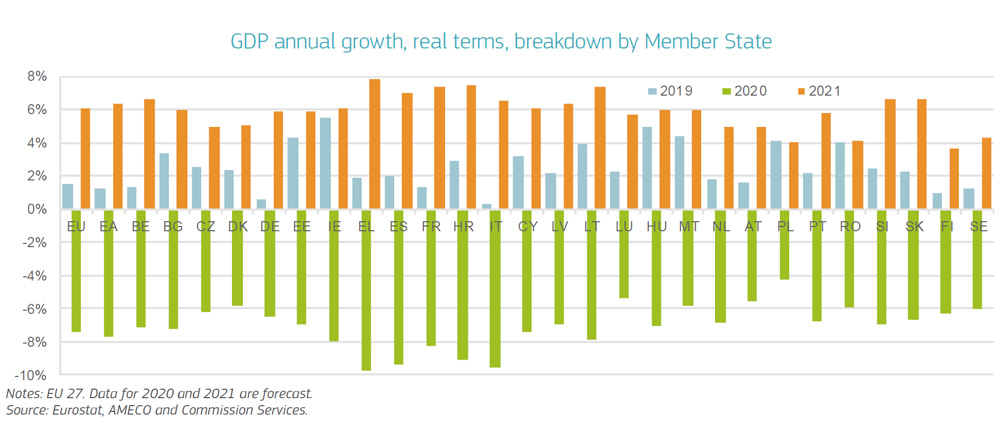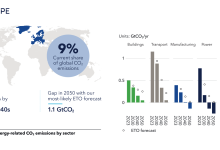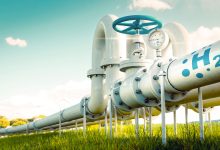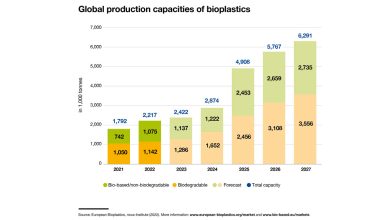Why Blue Economy Is So Important
The concept of ‘Blue Economy’ is one spreading fast throughout the globe and aims at transforming our economy, our habits and our planet during the 21st century. One of the key pillars of the notion is sustainability and many other are encompassed. With many similarities to ‘Green Economy’, the ‘bluer model’ aims at improving life as a whole, encompassing social aspects like social equity, along with reducing ecological risks and fuelling the economy through sustainable ways, for the sake of the current but also the future generations. The concept, evidently is tied to our oceans and seas; it encourages better stewardship of our ocean or ‘blue’ resources and highlights the close bonds between the oceans, global climate, and finally the wellbeing of humans.
Nevertheless, Blue Economy goes far beyond considering the oceans as a lever for economic growth. Numerous states across the globe fostered the development of their marine economies through the exploitation of maritime and marine resources (shipping, fishing, oil, gas, minerals etc.) often much concern of the effects of their activities on future generations. Evidently, multiple aspects of ‘blue’ emerge out of the need for sustainability, like preservations of traditional ways of life, carbon sequestration, and coastline resilience to help island (and not only) nations withstand the onslaught of climate change. Many of those island states, may have limited land surface but vast ocean resources at their disposal; this reveals immense opportunities for boosting their financial growth, not only tackling their social and economic challenges, but also preserving natural habitat.
But in order to reveal the sense of this ‘window of opportunity’, let’s go over some facts: the global ocean economy is valued at around 1.5 trillion dollars annually, while more than 80% of global trade’s volume is transported by sea. Fishing employs 350 million people directly and indirectly. By 2025 it is estimated that 34% of crude oil production will come from maritime exploitation, while aquaculture is the fastest growing food sector right now and provides more than half of the marine products widely available to consumers.
Now when it comes to how Blue Economy is connected to the Green Economies and what the differences are, there is not a very clear answer; the differences are subtle but still recognizable. During the United Nations conference of Rio de Janeiro, in 2012, the ‘Green Economy concept’ was the focal point along with its Institutional Framework for Sustainable Development. In some of the declarations the participants claimed that: “Eradicating poverty is the greatest global challenge facing the world today and an indispensable requirement for sustainable development. In this regard we are committed to freeing humanity from poverty and hunger as a matter of urgency. We consider green economy in the context of sustainable development and poverty eradication as one of the important tools available for achieving sustainable development. We emphasize that it should contribute to eradicating poverty as well as sustained economic growth, enhancing social inclusion, improving human welfare and creating opportunities for employment and decent work for all, while maintaining the healthy functioning of the Earth’s ecosystems.”
This was when multiple island and coastal states, during the preparatory work of the convention, pushed forward the agenda of incorporating the ‘Blue’ notion into the ‘Green’ framework, underlining the importance of the Ocean’s role in a sustainable future. Therefore, the notions are interwoven with the Blue Economy advocating the importance of the seas for sustainability and growth.
Shades of Blue
In order to better understand the notion, it should be examined under the prism of a strategic playbook, or framework. Australians consider the Blue Economy, at its core, to be about the “development of marine industry which ecologically, economically and socially benefit from marine ecosystem and ensure that the ecosystem-based management model should be the core in decision-making process of industrial and community development.” Australia launched the ‘Blue Well-being Initiative’, having recognized that ocean-based development and the blue GDP is of immense importance for Oceania.
China, through the Director of State Oceanic Administration under the Ministry of Natural Resources of the People’s Republic of China, Wang Hong, has underlined that the “Blue Economy is a sustainable marine economic development model. It is a new development mindset and its essence is to develop marine economy while protecting marine ecosystem well and finally achieving sustainable utilization of resources.”
On the other side of the world, Maria Cantwell, a United States Senator, defined it as a powerful policy for future growth focusing on “the jobs and economic opportunities that emerge from our oceans, Great Lakes, and coastal resources – is one of the main tools to rebuilding the United States economy.”
The European Union introduced the term ‘blue growth’ back in 2012, focusing on revitalizing economy, the marine industrial activities, sustainable energy, marine tourism, fisheries and aquaculture. In addition to traditional activities, marine/ocean-oriented information and science sectors are boosting their roles and stretching their contribution to the blue economy development.
Why it matters and how it can be done
Blue Economy can and should be considered a macro-economic lever, involving multiple aspects of national and international governance, economic growth and development, environmental safeguarding and appreciation. It is essentially an effort for integration of sustainable development and green growth. It focused on the coordination and bonding between marine ecosystems and ocean and coastal zone economies.
This being said, Blue Economy is the epitome of sustainability, servicing and connecting what is needed on an economic, cultural and environmental level.
There are of course numerous challenges in achieving such an interwoven bond between so many sectors, with a newly introduced notion. That involves all sectors of the economy from private/industrial to R&D and state policy. This level of complexity offers opportunities and challenges.
For example, the European Commission’s ‘Green Deal’, lists extremely ambitious goals to lead Europe to the very front of environmental protection and in the achievement of the global Sustainable Development Goals (SDG). With this in consideration, this challenge encourages the submission of innovative proposals based on EU Space data that have the potential to contribute to environmental protection related to the so-called ‘Blue Economy’. Some of the requirement is that the proposals should demonstrate ‘added-value’ in the use of Copernicus and Galileo/EGNOS data, the expected market impact and the extended (social, cultural, environmental) benefits. The use of Artificial Intelligence (AI), Data Analytics, Internet of Things (IoT), Machine Learning and Cloud Computing as supporting technologies is cherished.
The EU Space for ‘Blue Economy’ Challenge aims at increasing awareness of the potential EU Space data has to respond to global climate and environmental related challenges, but also to stimulate innovative projects that have the potential to open up new markets. This is an interesting and innovative attempt to gamify the transformation, involving the private sector.
European Blue Economy
The European Commission has long now proposed their ‘Blue Growth’ strategy, stating that Blue Growth will be at the very the core of marine policy and stating clearly objective key results and specific metrics for the future.
The Blue Growth Strategy has spearheaded multiple initiatives related to Europe’s oceans and seas, facilitating the collaboration between maritime businesses and public authorities across borders, and aligning numerous stakeholders ensuring the sustainability of the marine environment. Back In 2014, the Blue Economy Innovation Plan was launched, underlining that the project would be executed with a triple axis:
- Prioritizing the development of sectors with sustainable jobs and growth;
- Supporting knowledge, on an informational and legal level, and security in the blue economy;
- Developing sea basin strategies to ensure tailor-made measures and to foster cooperation between countries.
The EU issued a Report on the Blue Growth Strategy Toward More Sustainable Growth and Jobs in the Blue Economy, examining what has been learnt and what has been achieved since 2012, and the next steps. Five pillars are outlined in that report:
- The push for development in five focus areas, including blue energy, aquaculture, coastal and maritime tourism, blue biotechnology, sea bed mineral resources;
- The benefits of marine data, spatial planning and maritime surveillance to facilitate growth in the blue economy;
- The need to promote a partnership and win-win approaches;
- The urge for boosting investments;
- The idea to make blue growth strategy fit future challenge.
The numbers seem very good though; European economic activities connected to oceans, seas and coastal areas reached a record of 4 million persons employed and it keeps growing, a 7.2% increase compared to 2009 and 14% more than in 2014. This increase was largely driven by the coastal tourism and ports, warehousing and construction of water projects sectors. The blue economy’s contribution in the EU reached almost 2% in terms of employment and 1.3% in terms of GVA. Gross operating profit reached EUR 74.3 billion, being 2% higher than in 2009. Total turnover reached EUR 658 billion, rising 11% more than in 2009. The contribution varies with the five largest EU countries, UK, Germany, France, Italy and Spain being the largest contributors to the EU Blue Economy, in terms of both employment (with a combined contribution of 61%) and GVA (a combined contribution of 70%). Other EU countries with remarkable contribution in terms of either GVA or employment include Greece, Holland and Denmark. The Blue Economy represents more than 5% of national GVA or employment in the island Member States and those with significant archipelagos: Greece, Croatia, Malta and Cyprus. Evidently, the Blue Economy’s contribution to the national economy is very low for the landlocked Member States. Member States with a modest contribution to Blue Economy (up to 1% of GDP) are Belgium, Slovenia and Romania.
“Our major contribution to reducing regulatory burden has been the maritime spatial plan directive. The 22 Member States of the European Union with a coastline are free to allocate their space as they see fit but are obliged to develop a plan by 2021 that takes into account the views of stakeholders and the plans of neighbours. The implications of the scenarios for Europe in 2050 highlight the urgency of doing this. They suggest that windfarms could take up 15% of the waters of Belgium, Netherlands and Poland. This will transform the nature and level of human activity on our seas and will surely require changes to where and how other activities such as shipping and fishing take place. The plans will need to be forward looking and flexible enough to take unforeseen circumstances into account. Our seas will be different to what they are today but not necessarily worse in terms of ecosystem health. In fact, they could be healthier. The space between turbines, undisturbed by other activities, could see a return to a pre-industrial state with wild oysters covering the seabed providing food for the sea-life higher up the food chain. By defining what activities can and cannot take place in a given area reduces the time for licensing and the risk for new investments,” Andreea Strachinescu – Head of Unit Maritime Innovation, Marine Knowledge and Investment in the Directorate General for Maritime Affairs and Fisheries, European Commission, said in her speech at Power & Energy Tech Exhibition and Conference Vision 2030 – PETEC 2019.
“We are looking at higher education – a blue career centre in the Eastern Mediterranean supports mobility, career advice, retraining and e-learning vocational skills, welders, electricians and expect to have a ‘blueprint’ for tackling the issue by 2021. Finally it is essential; that we bring the public on board. Public support was critical to our measures to reduce plastic in the ocean. We want to engage them now on other issues. Even many activists for the climate or the marine environment are unaware of the potential contribution of the ocean for meeting their goals. We are thus developing measures to increase ocean literacy, particularly amongst young people. We are preparing material for teachers based on our Atlas of the seas and will begin testing it with focus groups next year,” she added.
“Oceans, coastal areas and marine activities are playing a crucial role now and in the future of the European Union and its citizens. Healthy oceans and coastal areas are vital for our societies and the future of our planet. They are the lungs of our planet, producing half of the oxygen we breathe. They are a source of healthy food, contributing 16% of the animal protein we eat and provide the basis for numerous economic activities that generate growth and jobs,” Mariya Gabriel, Commissioner for Innovation, Research, Culture, Education and Youth, responsible for the Joint Research Centre (JRC), underlined.
“Though our oceans cover more than 70% of the earth’s surface, we know less about what lies beneath the waves than we do about faraway planets. This prevents us from making the most of our resources while protecting marine ecosystems. The second Report on the European Blue Economy aims to change that. It reflects the importance that the European Commission attaches to a robust, evidence-based approach. Our oceans and seas can help us in tackling the challenges facing humanity; creating prosperity without endangering that of future generations,” Tibor Navracsics, from the European Institute for Innovation, said.
During the 2019 European Maritime Day conference in Lisbon, Commissioner for Environment, Maritime Affairs and Fisheries Karmenu Vella underlined that the focus was on supporting a “blue economy, the sustainable use of ocean resources for economic growth, through entrepreneurship, investment, and research and innovation.” On this occasion, the European Commission launches the second edition of its Blue Economy Report.
“Coastal regions are home to 214 million people and generate 43% of EU GDP. Today’s report confirms the blue economy’s role as an exciting growth sector, with opportunities both in established sectors like tourism and shipbuilding, and in emerging areas like ocean energy or the blue bioeconomy. Yet we also know that blue economy start-ups and small companies often struggle to get their good ideas off the ground. That is why the European Commission is currently developing an investment-readiness support tool to help them mature and eventually access the funding they need to scale up,” Commissioner Vella stated. He also reiterated the key role of the sea and oceans – in particular ocean energy – towards achieving a carbon-free Europe by 2050.
The most recent blue economy report incorporates various new elements, including the maritime defence and the maritime military equipment sectors. A very interesting element was the in-depth case studies on the economic impacts of marine protected areas and the contribution of the research and development sector.
The financial performance of coastal tourism and exploitation of marine living resources have been steadily on the rise. For fisheries, this is partially due to low fuel prices and partial recovery of some natural populations. Port activities, shipbuilding and maritime transport have been severely affected by the economic crisis in 2008, due to the decrease in global production and trade. Offshore oil and gas extraction have also been hit by the low fuel prices and the oil price wars. Nevertheless, the actual blue economy goes well beyond the established sectors. New innovative and emerging sectors, such as wind energy and biotechnology, have witnessed exponential growth in recent years. However, they are also met with challenges (wind energy production continues to be cheaper on land than offshore).
Another very interesting aspect is the ‘Blue Indicators IT tool’, which will allow to the public to easily visualize, extract and download much of the relevant data. Users will also be able to download reports, as well as the accompanying infographics and the relevant methodology. In addition to the report launch, the European Commission used European Maritime Day to update participants in-depth about several other ongoing maritime policy initiatives:
- The Technical Assistance facility for Investment in the Blue Economy, which will support blue economy start-ups and SMEs to gains more access to capital within a Blue Economy Investment Platform;
- The launch of operations for the Common Information Sharing Environment (CISE), for the overall EU maritime surveillance framework, with the guidance of the European Maritime Safety Agency;
- The progress on the ocean literacy platform ‘EU4Oceans’, which will bring together European groups, networks and organizations active in ocean preservation and ocean literacy, thereby paving the way for a ‘European Ocean Alliance’.
According to the EU Blue Economy Report 2020, The Blue Economy is embedded in the overall EU economy and is therefore highly influence by the economic cycle. The EU-28 GDP was estimated at EUR 15900 billion in 2018 (EUR 13500 without the UK) and employment at 224 million people (194 million people without the UK). The contribution of the Blue Economy established sectors to the EU-28 economy in 2018 was 1.5% in terms of GVA and 2.2% in terms of employment.
The relative size of the EU Blue Economy in terms of GVA with respect to the overall economy has remained stable at around 1.5% since 2012, while it has increased in terms of employment from 1.8% in 2015 to more than 2.2% in 2018.
A positive general economic environment supported the EU Blue Economy during the last decade, particularly since the end of the double-dip recession in 2013. However, the outbreak of the coronavirus pandemic in February 2020 represents a major shock for the global and EU economies, with severe socio-economic consequences. Despite the swift and comprehensive policy response at both the EU and the national level, the EU economy is expected to experience a recession of historic proportions this year, according to the latest Commission economic forecast. The different sectors of the Blue Economy will be significantly impacted.

Conclusion
Blue Economy can be seen as a policy, a project, a framework, a system and an idea. It has the potential to become one of the most viral ideas, spanning from the business applications all the way to cultural and environmental extensions. It is an idea that can also become a way of thinking, a way of acting and a way of designing a better future for the generations to come and the planet they will live on; maybe thinking and acting blue makes a lot of sense for the blue planet after all.







